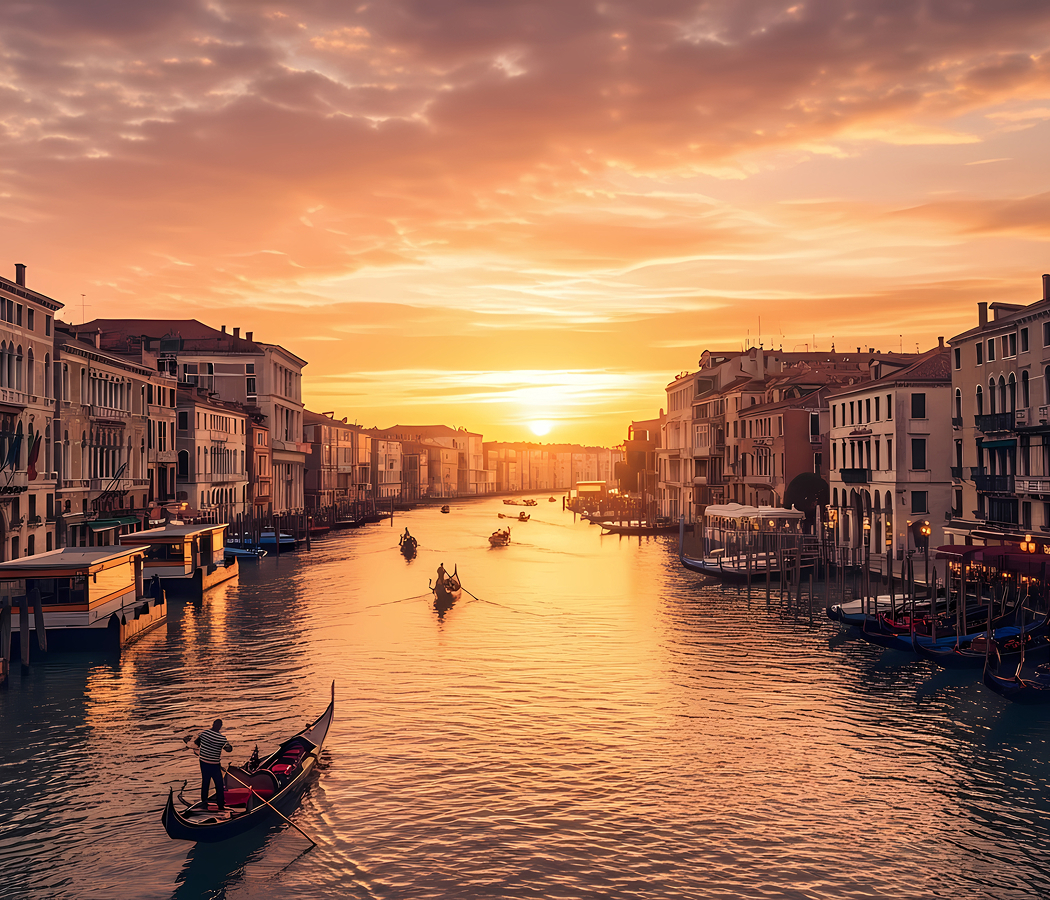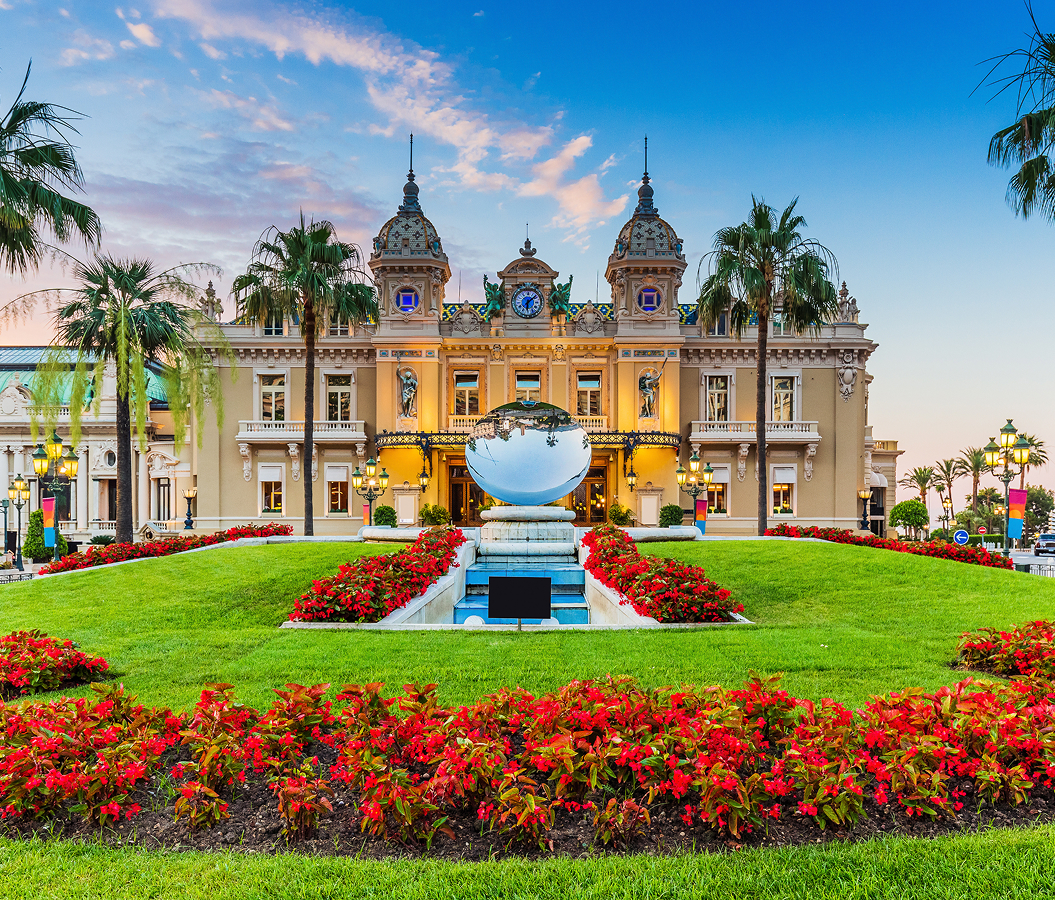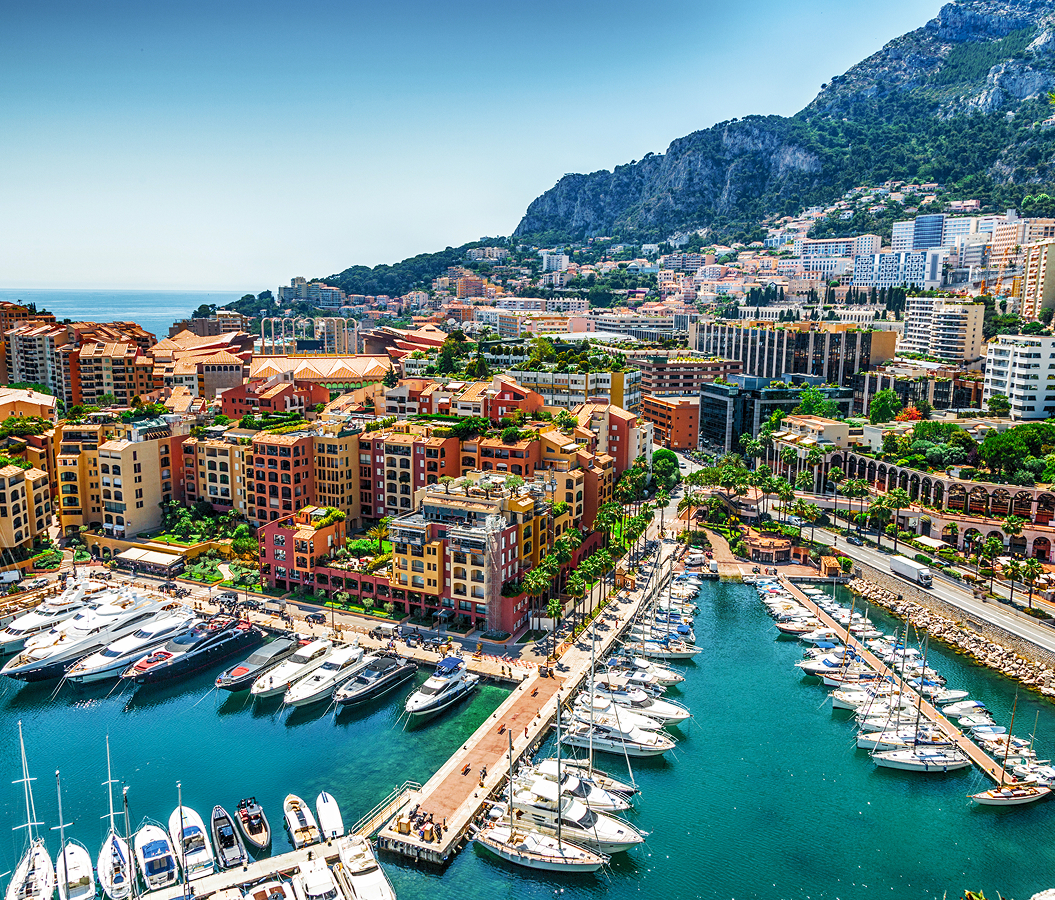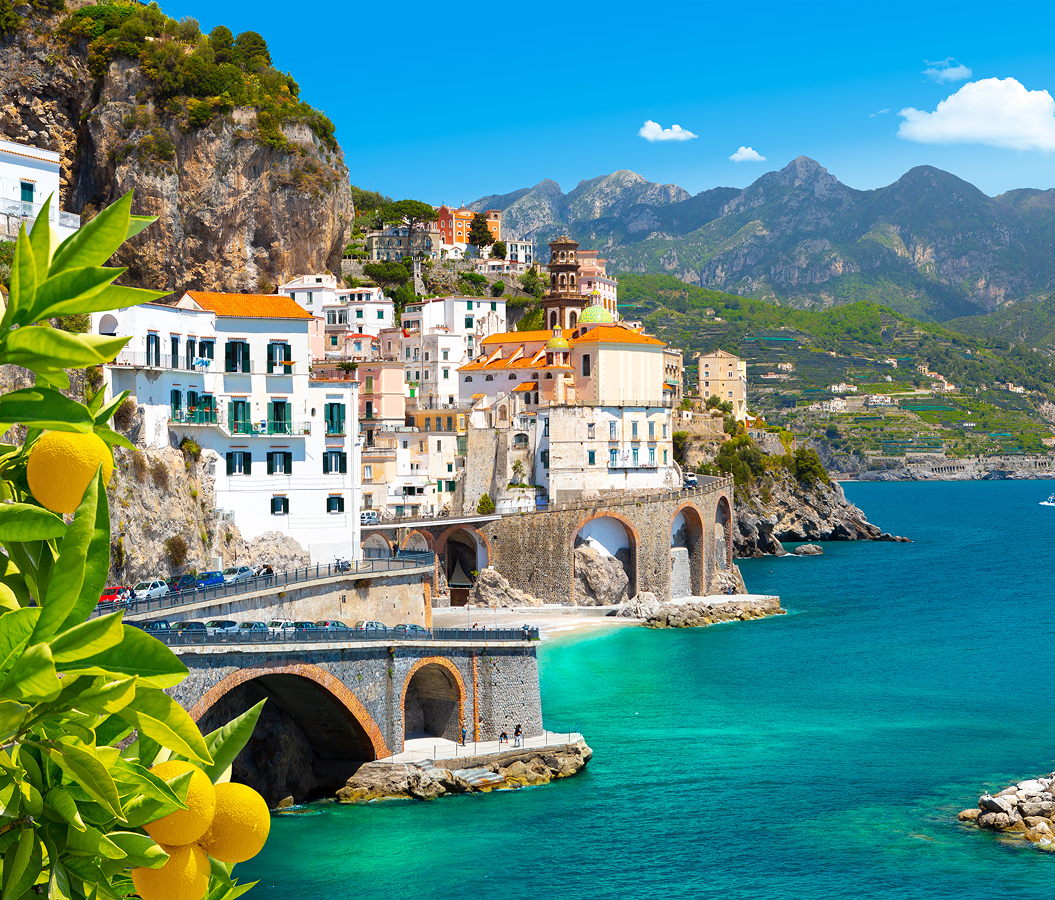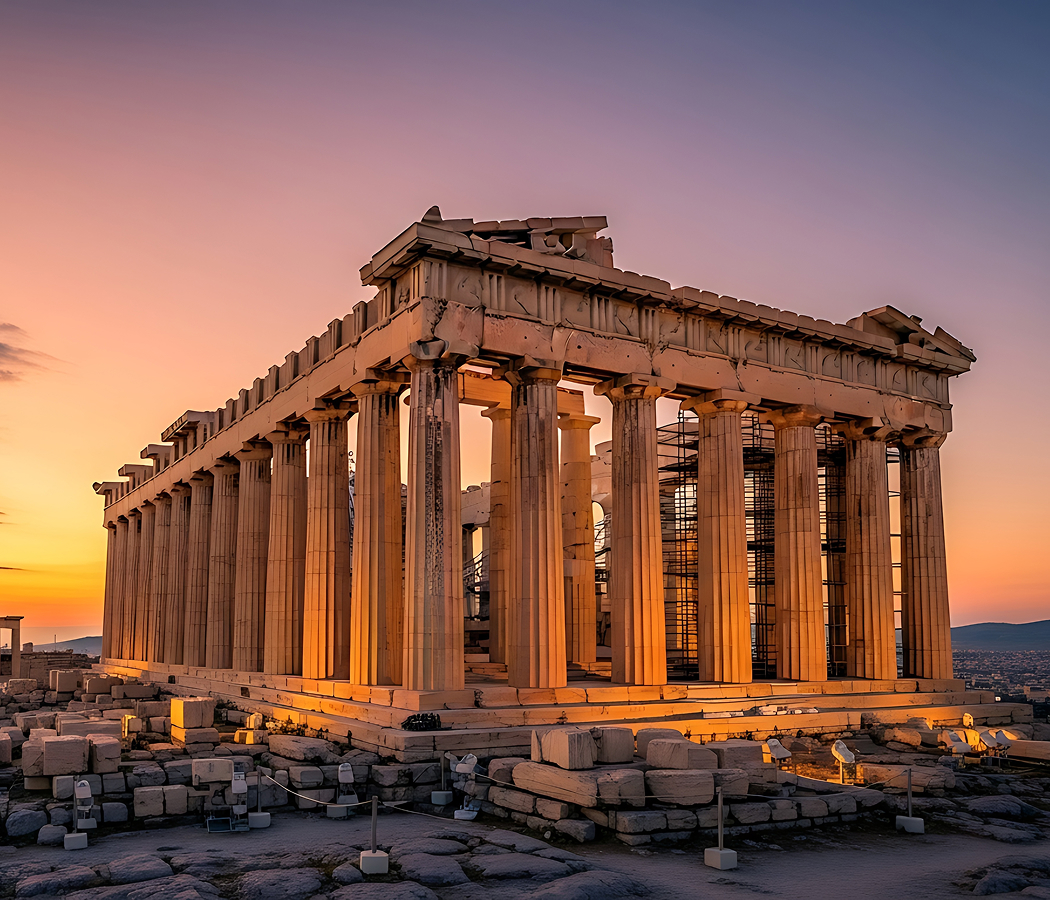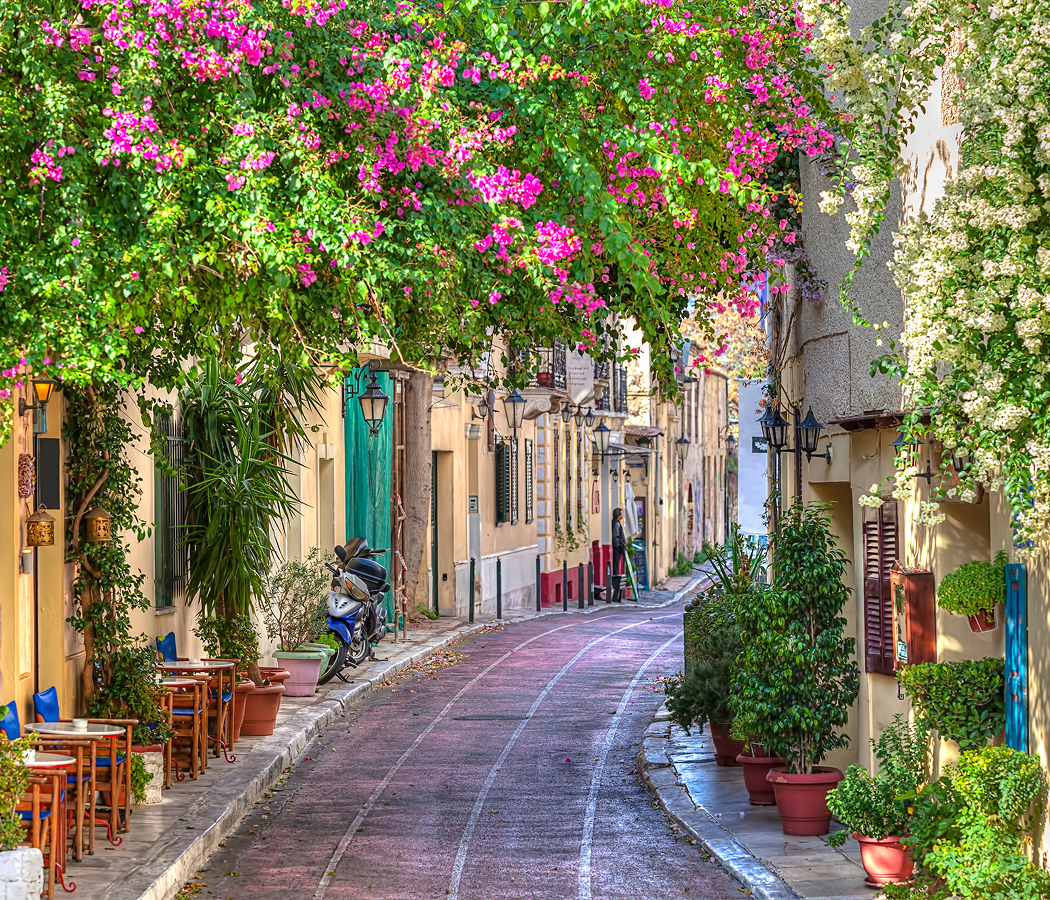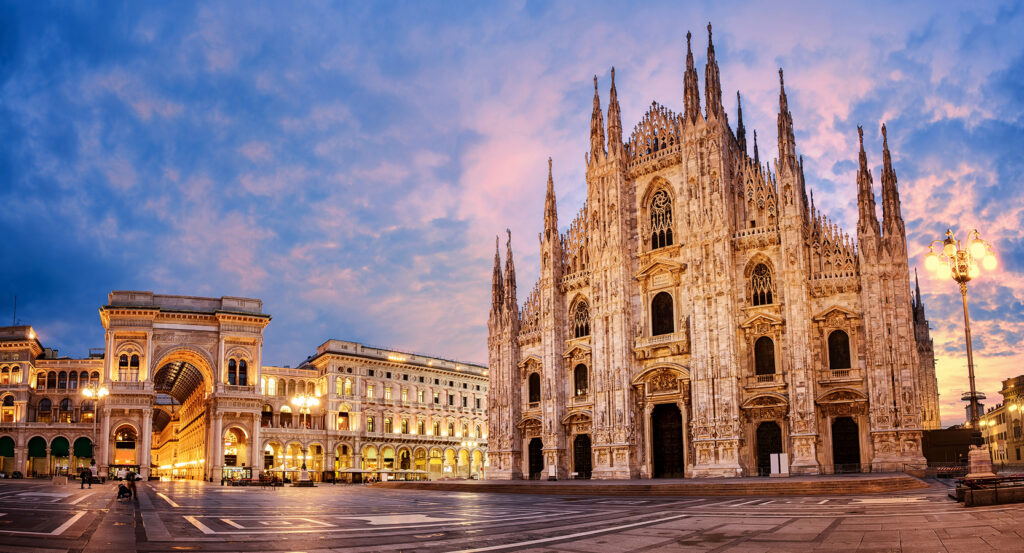
Why you should experience Duomo di Milano.
The Duomo di Milano is not just a cathedral, it’s a celestial mountain of marble rising from the heart of Milan, a vision so vast and intricate it seems to blur the line between architecture and dream.
Begun in 1386 and taking nearly six centuries to complete, this Gothic masterpiece embodies the ambition and artistry that define Milan itself: relentless innovation wrapped in timeless beauty. Standing before it, you feel the weight of both faith and genius pressing upward, a forest of 135 spires, each crowned with statues that seem to whisper to the heavens. Its façade, a pale lace of Candoglia marble, glows like snow in sunlight and blushes rose at dusk, shifting mood with every passing hour. The Duomo’s silhouette dominates Piazza del Duomo, its golden Madonnina, a radiant statue of the Virgin Mary, gleaming 108 meters above the city, serving as both guardian and compass. Step inside, and the immensity overwhelms you: sunlight streams through stained glass windows soaring taller than most buildings, painting the stone in kaleidoscopic light. Vast columns rise like petrified trees, their capitals a swirl of saints and leaves, while beneath the floor lie crypts that trace Milan’s Christian roots back to the 4th century. Every inch of this cathedral feels alive, as if carved not from marble, but from centuries of devotion. Here, you don’t just see art; you walk inside it, surrounded by the heartbeat of Milanese faith and imagination made eternal.
What you didn’t know about Duomo di Milano.
Behind its soaring pinnacles lies a story of persistence, politics, and passion unlike any other cathedral in Europe.
The Duomo’s construction began under Gian Galeazzo Visconti, Duke of Milan, who envisioned a structure that would rival the great cathedrals of France and Germany. Yet what followed was not simply a project, it was a saga spanning generations. Over 78 architects contributed to its evolution, blending French Gothic, Italian Renaissance, and even late Baroque influences into a single, harmonious whole. Its marble came from quarries in Lake Maggiore, transported via a canal system built specifically for the cathedral’s construction, a feat of logistics centuries ahead of its time. The Fabbrica del Duomo, the workshop established to oversee every stone, still operates today, maintaining the building’s delicate façade with obsessive precision. Inside, each window tells a story, the stained glass, among the largest collections in the world, depicts scenes from the Old and New Testaments in astonishing color and detail. Beneath the main altar rests the relics of Saint Charles Borromeo, Milan’s patron saint and reformer, preserved in a crystal case surrounded by flickering lamps. The crypt below reveals the foundations of an earlier basilica, offering a glimpse into Milan’s ancient past. Yet perhaps the most breathtaking aspect of the Duomo lies above: the rooftop terraces. From here, visitors can wander among marble spires and statues, over 3,400 of them, each hand-carved, each unique, creating an otherworldly skyline unlike anywhere on earth. It’s said that Napoleon Bonaparte himself ordered the completion of the façade in 1805 before his coronation as King of Italy, declaring it worthy of an empire. In truth, it’s worthy of eternity. Even after centuries of restoration and care, the Duomo continues to evolve, a living masterpiece shaped not by time’s decay, but by humanity’s enduring reverence for beauty and belief.
How to fold Duomo di Milano into your trip.
Visiting the Duomo di Milano is not just a stop on an itinerary, it’s an ascent into wonder, a pilgrimage through the soul of the city.
Begin your experience at Piazza del Duomo, where the cathedral rises like a marble symphony amid the hum of Milanese life. Arrive early in the morning, when the sun first touches the Madonnina and the square is still hushed; the façade gleams pale gold, and the details, angels, gargoyles, saints, reveal themselves in quiet perfection. Step through the bronze doors, each panel a sculptural narrative of faith and struggle, and pause inside the nave. The play of light through the stained glass is mesmerizing, the air heavy with incense and centuries of prayer. Wander slowly down the aisles to the main altar, where Borromeo’s relics rest, and let the music of the organ, one of the largest in Europe, resonate through your chest. Then, ascend to the rooftop terraces, the crown jewel of the Duomo experience. The climb can be made by stairs or elevator, but the reward is the same: a walk among the spires, where stone angels lean into the wind and Milan stretches endlessly below. On clear days, you can see the snow-capped Alps glimmering on the horizon, a reminder that even nature seems to bow before this monument. After descending, take time to visit the Duomo Museum next door, which houses original sculptures, models, and tools used in the cathedral’s centuries-long creation. When you return to the piazza, linger as the light fades and the façade blushes pink against the twilight sky, a spectacle that has moved travelers for generations. Nearby cafés and gelaterias offer perfect vantage points to watch the cathedral glow, every detail alive with the city’s pulse.
Hear it from the Foresyte community.
Rooftop is the move. You wander between marble spikes and the city shows up under your feet, and for a second you feel like you own all of Milan.
Where meaningful travel begins.
Start your journey with Foresyte, where the planning is part of the magic.
Discover the experiences that matter most.















